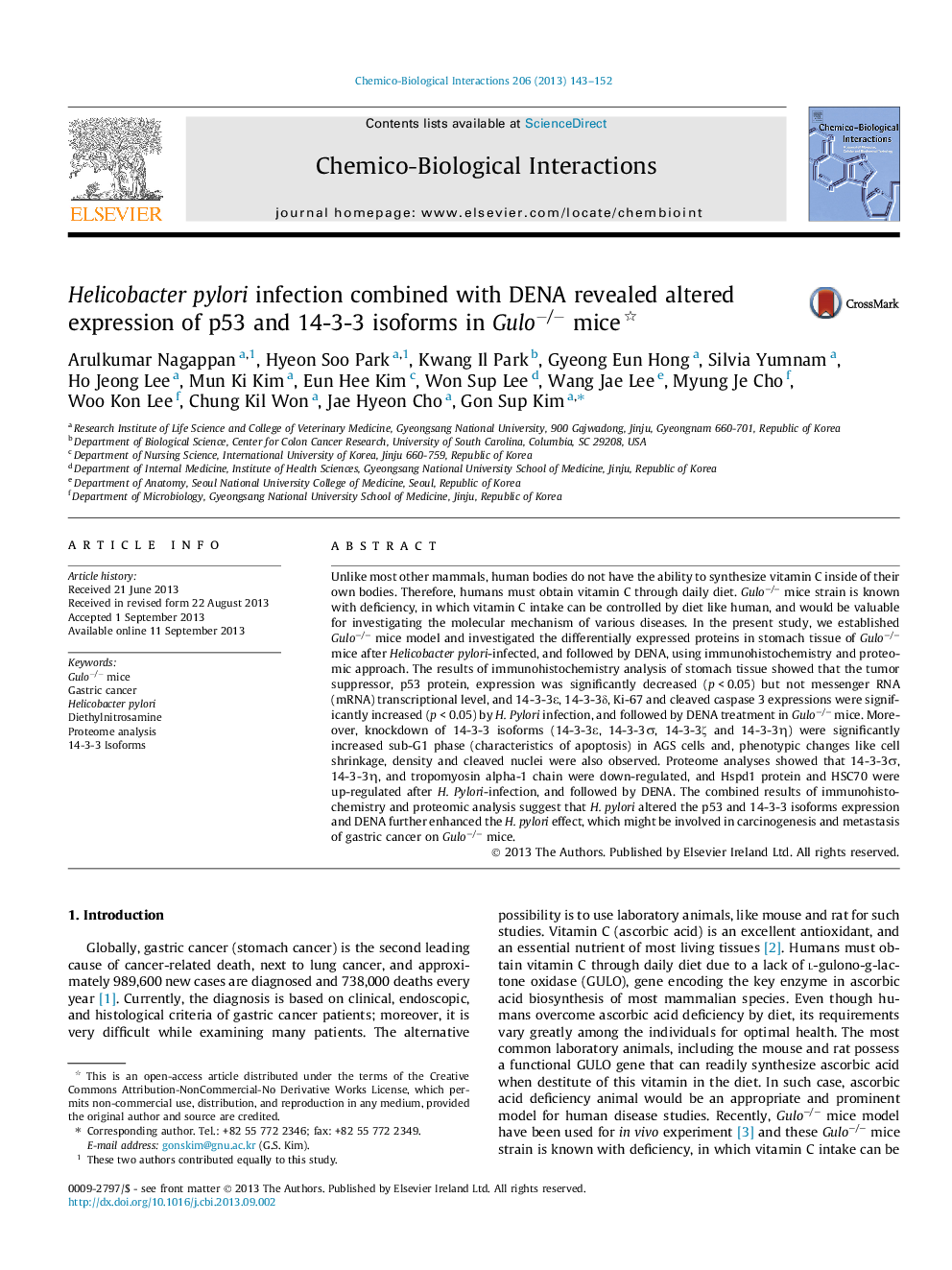| Article ID | Journal | Published Year | Pages | File Type |
|---|---|---|---|---|
| 5848096 | Chemico-Biological Interactions | 2013 | 10 Pages |
Abstract
Unlike most other mammals, human bodies do not have the ability to synthesize vitamin C inside of their own bodies. Therefore, humans must obtain vitamin C through daily diet. Guloâ/â mice strain is known with deficiency, in which vitamin C intake can be controlled by diet like human, and would be valuable for investigating the molecular mechanism of various diseases. In the present study, we established Guloâ/â mice model and investigated the differentially expressed proteins in stomach tissue of Guloâ/â mice after Helicobacter pylori-infected, and followed by DENA, using immunohistochemistry and proteomic approach. The results of immunohistochemistry analysis of stomach tissue showed that the tumor suppressor, p53 protein, expression was significantly decreased (p < 0.05) but not messenger RNA (mRNA) transcriptional level, and 14-3-3ε, 14-3-3δ, Ki-67 and cleaved caspase 3 expressions were significantly increased (p < 0.05) by H. Pylori infection, and followed by DENA treatment in Guloâ/â mice. Moreover, knockdown of 14-3-3 isoforms (14-3-3ε, 14-3-3Ï, 14-3-3ζ and 14-3-3η) were significantly increased sub-G1 phase (characteristics of apoptosis) in AGS cells and, phenotypic changes like cell shrinkage, density and cleaved nuclei were also observed. Proteome analyses showed that 14-3-3Ï, 14-3-3η, and tropomyosin alpha-1 chain were down-regulated, and Hspd1 protein and HSC70 were up-regulated after H. Pylori-infection, and followed by DENA. The combined results of immunohistochemistry and proteomic analysis suggest that H. pylori altered the p53 and 14-3-3 isoforms expression and DENA further enhanced the H. pylori effect, which might be involved in carcinogenesis and metastasis of gastric cancer on Guloâ/â mice.
Related Topics
Life Sciences
Environmental Science
Health, Toxicology and Mutagenesis
Authors
Arulkumar Nagappan, Hyeon Soo Park, Kwang Il Park, Gyeong Eun Hong, Silvia Yumnam, Ho Jeong Lee, Mun Ki Kim, Eun Hee Kim, Won Sup Lee, Wang Jae Lee, Myung Je Cho, Woo Kon Lee, Chung Kil Won, Jae Hyeon Cho, Gon Sup Kim,
